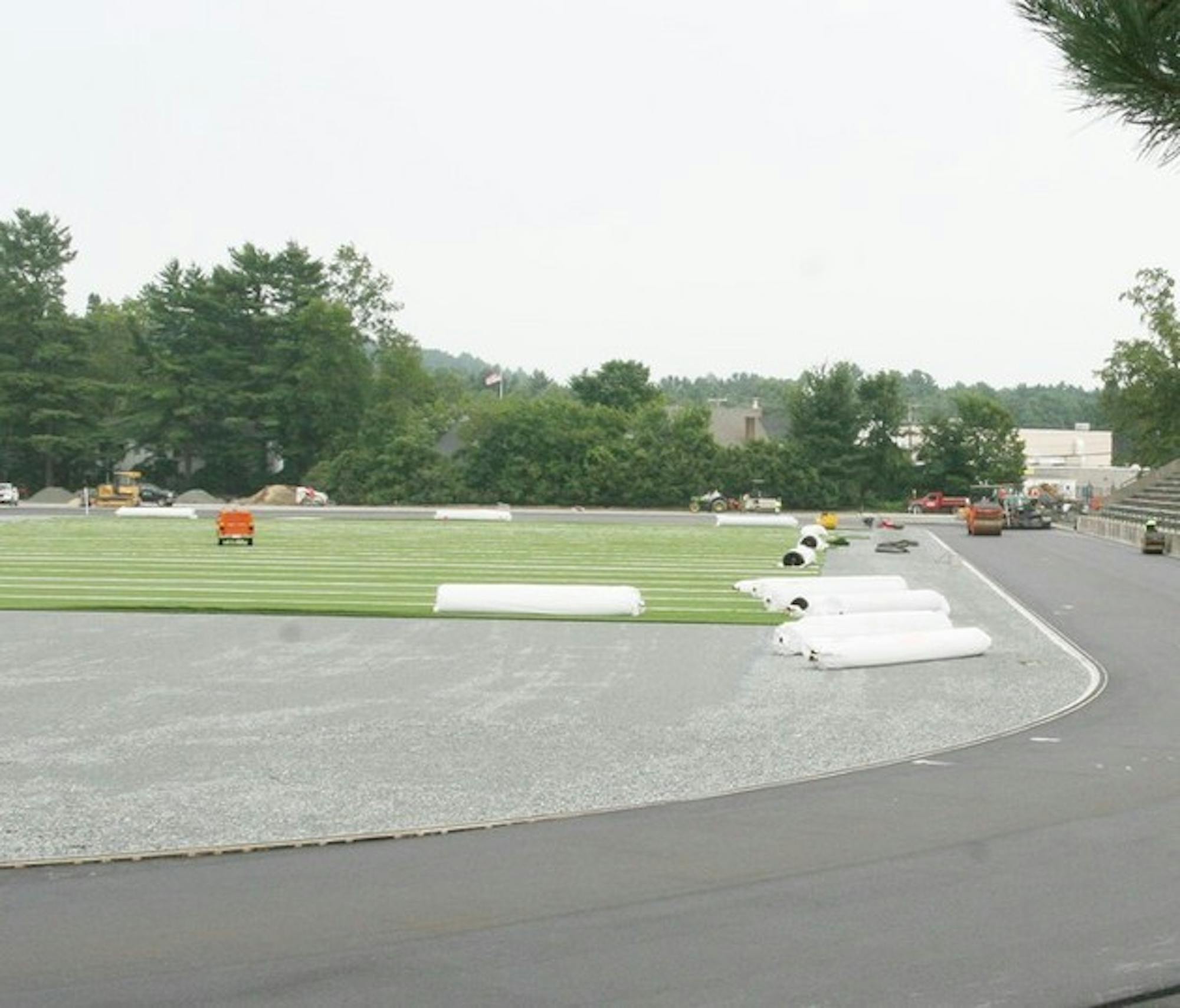The stadium, opened in 1893 and dedicated in 1923, used to seat 20,416 spectators and was the second largest stadium in New Hampshire. The east grandstands, however, completed in 1968, will be torn down and then reduced drastically to make room for the new Varsity House. The new seating capacity is predicted to be 13,000.
According to Dartmouth's Office of Planning, Design and Construction, the old stadium accommodated the 18,000 fans that came to see every Dartmouth-Harvard game in the 1970s and 1980s, though Dartmouth has seen less than 11,000 spectators at each game in the last 15 years. The reduced seating capacity will make the stadium look more packed.
The installation of field turf, a durable synthetic infill turf that will make the field available for year-round use, will replace the natural grass field.
The new surface came as good news to many people, especially the football players, who find playing on the grass field difficult because of the number of divots and the unnaturally sloped surface.
"I was dissatisfied with the old field," Mark Brogna '08 said. "I felt it was far below a Division I collegiate program's level. I was very happy to hear that we were switching to the new surface. I was also pleased to hear about the renovations being done to the stadium itself because unfortunately the seats were not getting filled every game, but with the new configuration, it will make the stadium seem more filled and every athlete thrives in performing in front of a full crowd."
"I think there will be a positive effect with the new field," Tom Bennewitz '08, who played on synthetic fields in high school, said. "We have had footing issues with loose grass and we will no longer have to worry about muddy games because of rain."
When asked if the artificial turf will affect the way the team practices, Mike Hodgson, the offensive coordinator and tight ends coach, said, "It won't change us at all. The new turf that we are putting in is so much like grass. Only now we won't have to worry about mud."
Construction has also started on the new Varsity House, which will replace the Davis Varsity House. With 10,000 square feet of space, the new Varsity House will accommodate locker facilities, a strength-training center, video rooms and offices for the football staff.
Clark Companies is in charge of the project and is currently completing the installation of the asphalt material for the track surface. As soon as next week, Field Turf, Clark Companies' subcontractor, will complete the installation of the synthetic turf. They will first cut and sew the sidelines together, install the centerfield and end-zone logos and then install the field turf itself, an artificial turf made more forgiving by a rubber granule base.
"The work will definitely be completed by August 22," Matthew Purcell, assistant director for budgets and contracts the Office of Planning, Design and Construction and the projector manager for Memorial Field construction, said.
The track surface, according to Purcell, will be installed around the first week of September and be completed by Sept. 22.
Buddy Teevens '79, Big Green football head coach, has said that the construction of new facilities for football is important in recruiting players.
Hodgson agrees.
"It absolutely affects how effectively we recruit," Hodgson said. "Kids nowadays want you to show them something. And once you show them the new facilities and capture their attention, it's easier from there."
However, a number of recruits in the class of 2010 did not weigh the new facilities particularly heavily as they made their decisions to matriculate at Dartmouth.
"Although the most important factor to me was the ability to play as a freshman, I felt that I had an opportunity to play at all three [schools I considered], so the coaches became the deciding factor and the facilities were like a bonus and a reassurement that Dartmouth was serious in turning the program around," Peter Piedermann '10, who was also recruited by the University of Pennsylvania and Princeton, said.
Above all, the new players consider Teevens and his team of coaches the determining factor in committing to a school.
"Coach Teevens is a great man," Philip McKeating '10, who claimed that the new facilities did not play a role in his decision to matriculate at Dartmouth, said. "I would rather play football for someone who can make me into a great man than someone who can win games. Coach Teevens can do both, so I feel honored to get to play for him."




